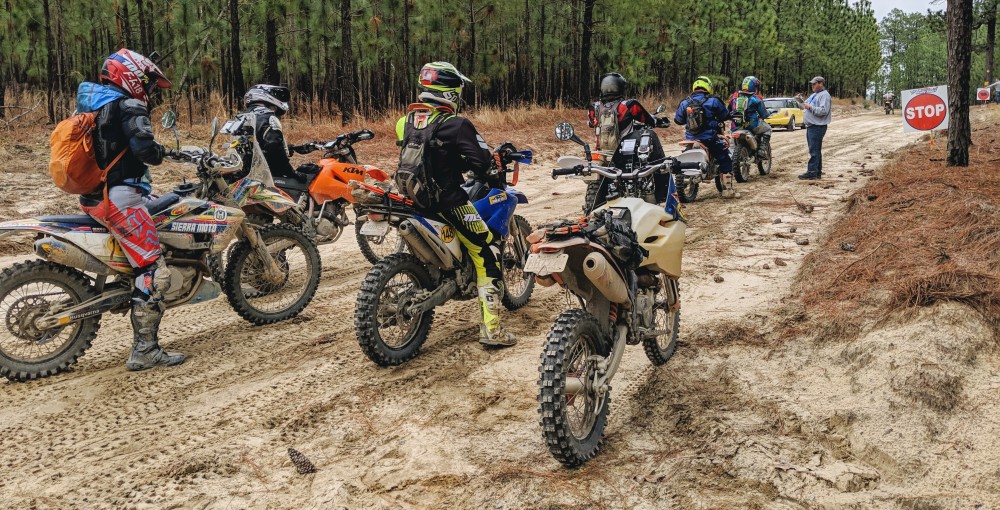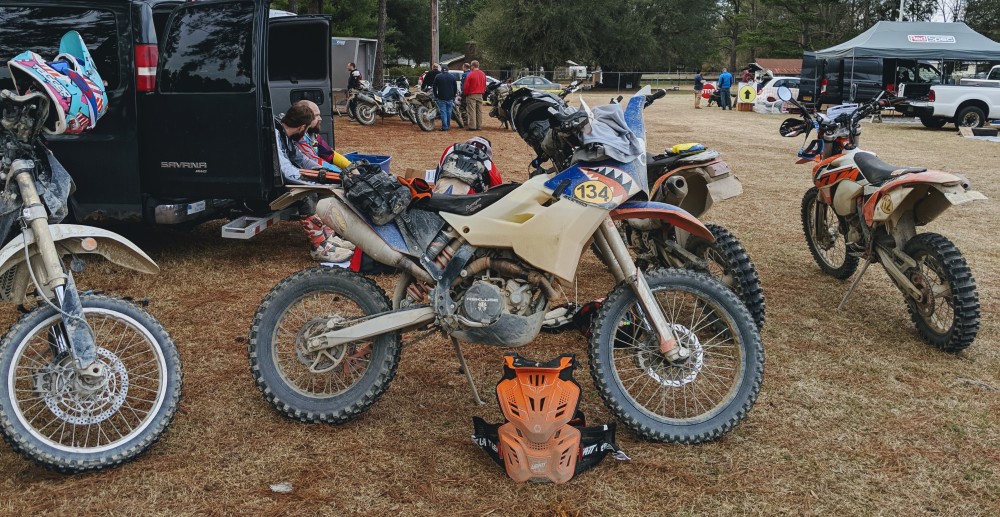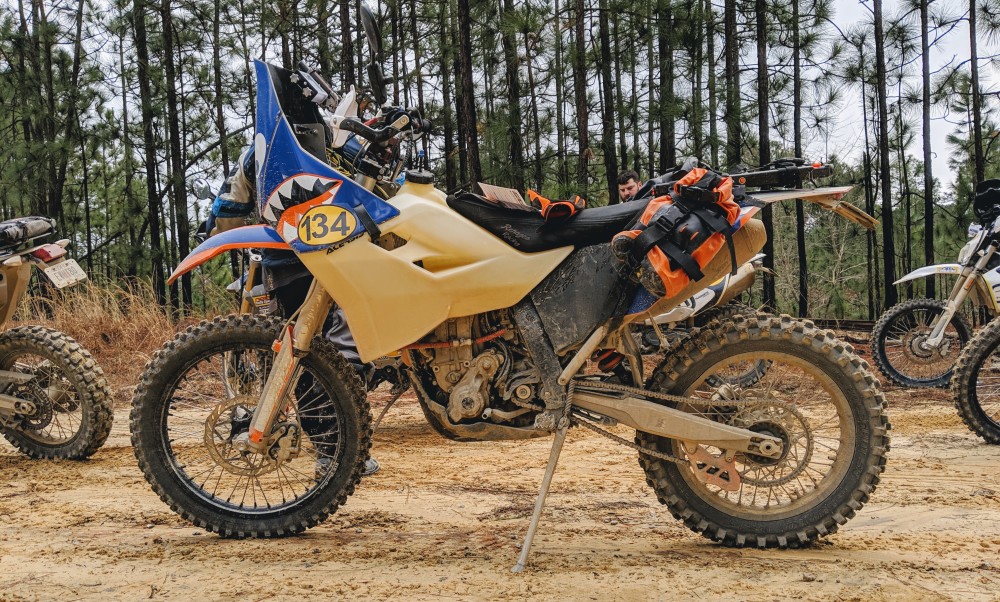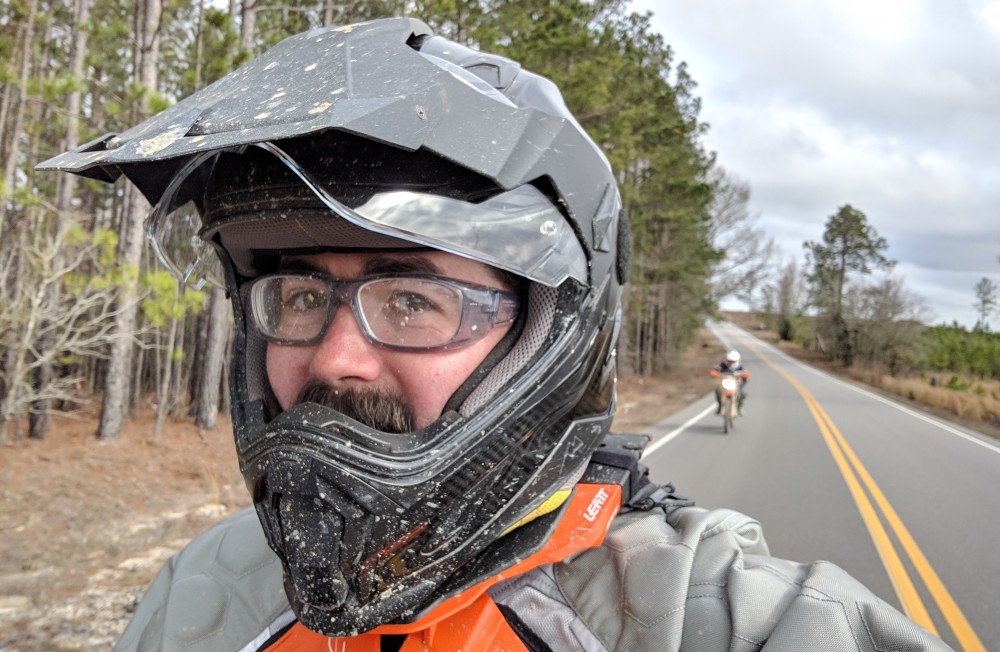Debriefing
5 March 2019Now that the rally is finished, I want to recap some of what worked and what I could do differently next time.

What Worked
-
The rally racing clinic on the Thursday before the race was really beneficial. It was a good introduction to the terrain that we would be racing on, and a good general refresher on riding off-road. While I have a lot of off-road riding under my belt, I have not ridden a lot over the last year. Also, the clinic did a great job explaining the logistics of rally racing and how the timing system works. On race day I felt pretty confident that I knew what I was doing.
-
The bike performed flawlessly. Although I did damage a fuel line during the rally racing clinic on Thursday, I was able to easily repair it at lunch and continue without any incidents on race day. The bike didn't miss a beat despite my complete lack of mechanical sympathy. Bonus: no flat tires.
-
I rode with an endurance race mindset. With a total of nine special stages, I rode conservatively to make sure that I still had energy left for the later stages. I stayed hydrated and fed—no bonking here.
-
Relating to the previous point, I also prioritized not crashing. Obviously crashing hurts, but even if it's a soft landing, a lot of energy is expended in picking the bike up and getting going again. I can't afford that.
-
I had fun. I'm not a competitive rider. Sure, it was great fun to occasionally pass someone, but for me it was more of an opportunity to legally ride as fast as I want (or can) in a controlled environment. If I saw someone coming up behind me, they had already proven themselves to be much faster than me (by gaining at least thirty seconds on me) so I just moved over and waved them by—everyone's happier that way.

What I Could Do Differently
-
The bike could take advantage of taller gearing. I topped out on the straights at around 80 mph. While that sort of speed on loose sand feels really fast, I know the bike has the power to easily go faster with taller gears. I could run a significantly smaller rear sprocket and gain some top speed without sacrificing bottom-end performance (since I was launching in 2nd gear anyways).
-
I need to learn to shift around my weight more. I was too focused on holding on and not focused enough on my body position, so there is considerable opportunity to increase my level of control by being intentional about managing my body position.
-
Commit to the line. Loose, rutted sand is a mind game. The bike will go where you look if you get on the gas and go for it. I was getting pretty comfortable with the straight sections but turns in the churned-up sand were still intimidating. This is an area where I need more practice to improve.
-
Push harder. I know the point is to have fun, but the point is also to go fast. This is a controlled environment: the course is closed to traffic and the turns and hazards are marked. I rode to conserve energy, but I left a lot more in reserve than I needed to.
-
Reduce the tire pressure. I ran with about 18 psi, but could have gone down to 15 or even 12 psi for a little more traction. This would help the bike feel a little more planted and hook up better while accelerating out of the corners.
-
Get in shape. I'm happy with how I did but I know that my own physical fitness is one of the big things that holds me back. Working to lose 40-50 lbs and improving my cardiovascular capacity would be a huge boost to my performance.

Summary
Overall, my entry in the 2019 Sandblast Rally was a success! I finished the race, didn't hurt myself or the bike, and had a lot of fun. Plus, I made some new friends. If time and resources allow, I would like to race again here or elsewhere in the future.


